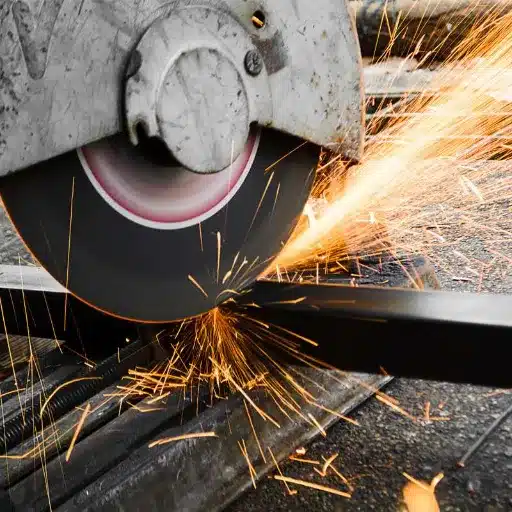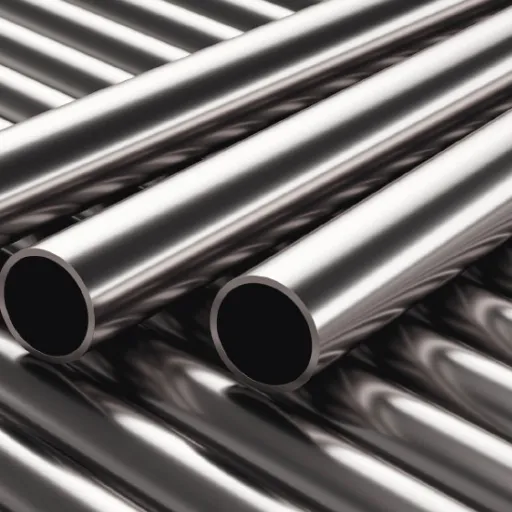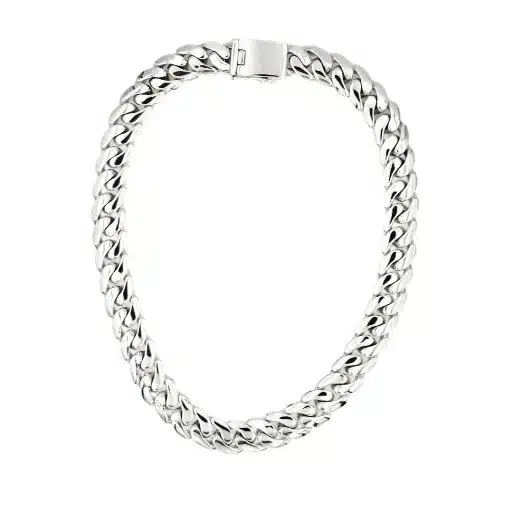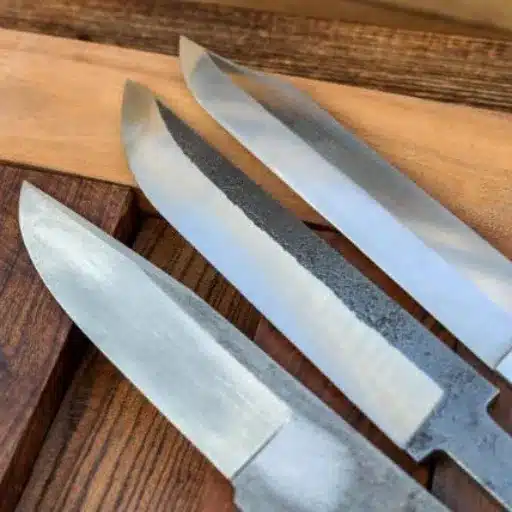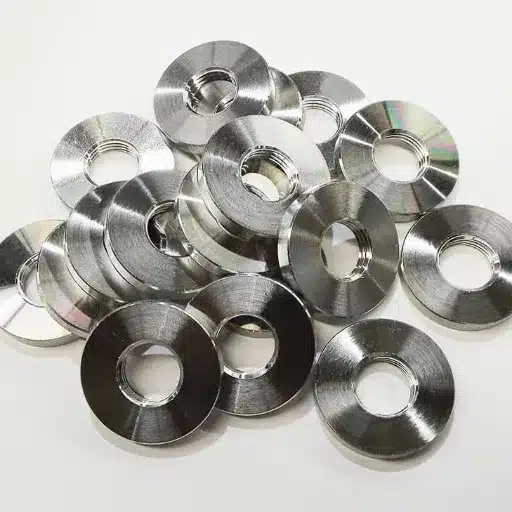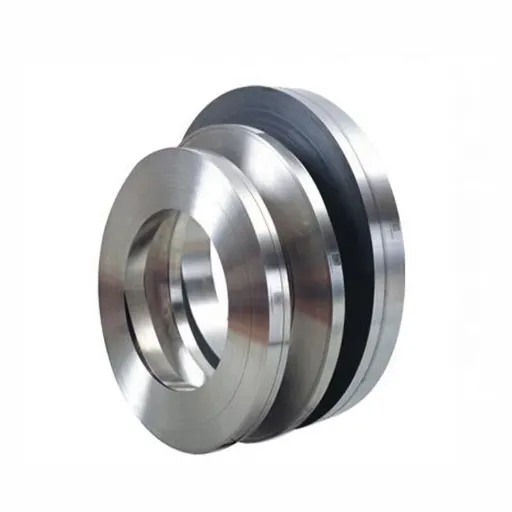Stainless steel cutting can really bring a shiver down the spine of anyone who doesn’t know its tough and resilient nature. Whether you are a DIY person performing a home project or a professional who needs to work with precision, the right tools and most appropriate techniques are your best weapons in achieving a tidy and accurate cut. This article is a complete toolbox that guides you through the methods and tips that allow safe and effective cutting of stainless steel, saving you on time, exertion, and regrettable errors. From picking the correct cutting tool to common pitfalls, we have everything you need; so, put your learning hat on and embrace cutting stainless!
Introduction to Cutting Stainless Steel
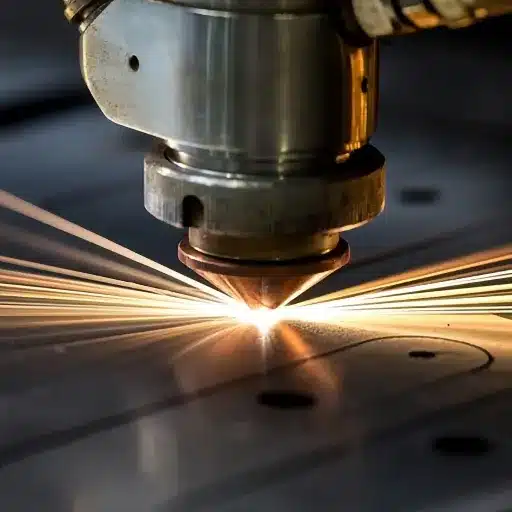
Cutting a stainless steel sheet involves selecting the appropriate kind of machinery such as an angle grinder, circular saw, or plasma cutter, according to the thickness of the steel and the precision required. Then, one should follow all the safety protocols, select the right cutting surface, and proceed with steady, controlled hand movements to ensure clean, accurate finishes.
Why Proper Technique Is Required
The importance of proper techniques in cutting stainless steel lies in the assurance of precision, efficiency, and safety. Stainless steel, being a very strong and corrosion-resistant material, poses barriers to cutting due to its hardness and toughness levels. Incorrect methods or wrong tools can cause unequal cutting, wasting of materials, overheating, or they might even damage the tools themselves. Industry records state that mishandling stainless steel can increase the scrap rate by about 30%, causing major financial setbacks to projects of large-scale applications.
Key Insight: Tool life and cutting accuracy are those attributes that are enhanced when you use proper technique. Such is, for example, that using carbide-tipped blades or abrasive cut-off wheels designed for stainless steel will increase tool life 3 to 5 times compared to using general-purpose blades. Cooling methods can reduce friction and heat buildup, which otherwise leads to warped edges or tool wear. You could use a steady flow of cutting fluid.
Cutting Stainless Steel Challenges
Stainless steel cutting has its unique challenges typically related to the steel’s hardness, toughness, and high chromium content. Being a high-hardness material, one difficulty arises from its low thermal conductivity, meaning heat produced in cutting would be locally generated and not dissipated fast enough. This may lead to thermal distortion or warping, especially in thinner sheets, or cause excessive wear to tools. Another is the high hardness of stainless steel that makes conventional cutting tools wear out rapidly, hence losing efficiency and precision.
Work hardening is maybe another hurdle, as this phenomenon results in stainless steel becoming harder while being deformed. Hence, if the tool used is not sharp or if the parameters used for cutting are inappropriate, they may increase resistance and complicate the finishing of the cut. For example, grades like 304 or 316 stainless steel are particularly prone to work hardening, meaning that cutting speed, feed rate, and lubrication must be determined carefully.
Cutting Techniques Applied to Stainless Steel
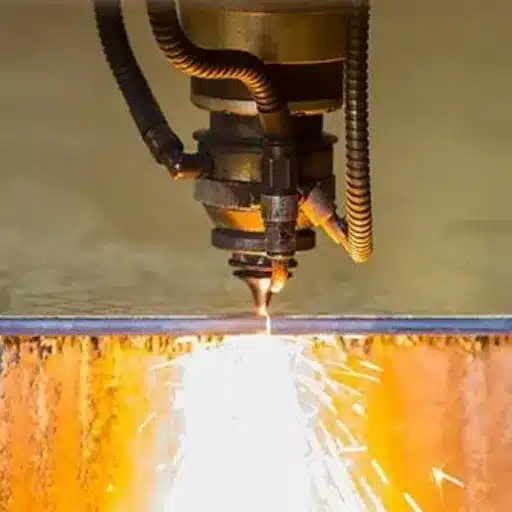
While cutting stainless steel, I would always prioritize the use of sharp tools and adequate cutting conditions to prevent work hardening. Appropriate speed and feed must be maintained, and considerable amounts of lubricant should be used to keep resistance down while allowing easy chip removal. For examples of steel grades 304 or 316, utmost care should be taken to avoid all impurities from being embedded and to achieve smooth and clean marks.
Plasma-cutting: Fast and Versatile
The main traits of a plasma cutter are speed, versatility, and its ability to cut through many ranges of conductive materials. The process melts and forcibly ejects material along the cut path using an electrically conductive plasma arc. It is given that plasma cutters can cut through metals such as stainless steel, aluminum, brass, and copper with exquisite precision.
The primary aspect that makes plasma cutting appealing is the speed with which it achieves its purpose. Modern plasma cutting systems can achieve cutting speeds approaching 200 inches per minute and are therefore well-suited to needs of high-output production. Besides speed, thanks to operating reasonings, plasma cutting turns out to be comparatively far less expensive than other modes, especially when considering somewhat thicker materials. Recent analysis of markets, for instance, has brought out the capability of plasma cutting systems to easily cut through materials up to 2 inches thick, which few other traditional methods can boast.
Waterjet Cutting: Without a Heat Affected Zone
Waterjet cutting is a high-precision manufacture using a high-pressure stream of water mixed with abrasive material, giving it the ability to pass through a variety of materials. Among its primary advantages is the lack of a Heat Affected Zone (HAZ). This makes it very suitable for cutting heat-sensitive materials, like certain metals, plastics, and composites, situations in which preserving structural integrity and appearance is critical.
Market Data: The method uses water pressure, generally between 30,000 and 90,000 psi, to cut through materials that can be up to several inches thick. According to a MarketsandMarkets report, the waterjet cutting machine global market is forecast to rise from revenue of $1.15 billion in 2023 to a sales revenue of $1.69 billion by 2028, with a CAGR of 7.9%. This growth is considered due to its versatility in various sectors like aerospace, defense, automotive, and industrial production.
Comparison of Cutting Methods
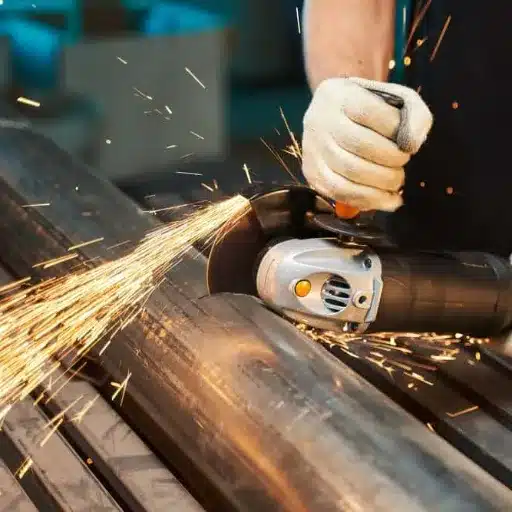
When comparing cutting methods, I find that waterjet cutting stands out because it gives precision without the build-up of heat, thereby minimizing the possibility of material damage. Unlike lasers, waterjet cutting can process various materials and thicknesses, giving it a superior edge in various applications.
Laser Cutting Pros and Cons
✓ Pros:
High Precision and Accuracy
Laser cutting brings to bear an accuracy measuring as close as 0.001 inches of tolerance. This finest set of measures is good for the finest designs, which are used in industries like aerospace, electronics, automotive manufacturing.
Fast and Efficient
Lasers can cut especially fast on thin materials without compromising quality. Laser systems can cut thin sheet metals at speeds ranging from 20-70 inches per minute, depending on the material and thickness.
Material Versatility
Laser cutting is a very effective action on almost any material: metals, plastics, wood, textile, and even some composites. Advanced laser systems can work with materials with thicknesses of 1 inch for steel and 0.5 inches for aluminum.
✗ Cons:
Costly in Terms of Initial Investment
A laser cutting machine can go many miles to cost a lot and range anywhere from $10,000 for entry-level systems all the way to over $250,000 for advanced industrial-grade equipment.
Not All Materials are Suitable
Some materials can pose a challenge to lasers, including highly reflective metals like copper and brass. Reflection may reduce the efficiency of cutting and could even damage the machineries if measures are not taken.
Heat-Affected Zone (HAZ)
The laser produces heat that may create a little heat-affected zone which might produce a bit of warping or discoloration in materials, mostly on thin sheets or sensitive plastics.
Advantages and Disadvantages of Plasma Cutting
✓ Advantages
Speedy Cutting
Plasma cutting is one of the fastest cutting methods compared with something like oxy-fuel cutting, especially on thinner metals. For example, it could cut steel at a speed of 200 in/min, thus maximizing productivity.
Capability to Cut a Variety of Metals
Plasma cutting can cut any electrically conductive material, and that includes steel, aluminum, copper, and stainless steel. This flexibility makes it useful in different industries such as manufacturing and automotive repair.
Precision and Clean Cuts
Modern plasma cutters provide precision with little heat distortion, resulting in clean cuts and accurate work, even on complex designs. The smaller HAZ means that the material is less distorted.
✗ Disadvantages
Lost of Accuracy with Thick Materials
Plasma cutting is regarded for thin metals, but it loses accuracy when dealing with thick materials. Thick cuts could probably lead to bevels or uneven edges requiring further refinement.
Energy-Consuming
Being a plasma system, plasma cutting requires huge amounts of electrical energy and could, therefore, cost quite an amount in the long run. This could be a concern for environmentally-conscious businesses as opposed to energy-efficient alternatives.
Needs Safeguards
Since the production of plasma sparks hot and emits intense light through the bright UV rays, very abnormal sounds, and potentially adverse fumes, care must thus be taken to wear protective gear and ensure adequate ventilation in the workspace.
The Tools for Cutting Stainless Steel
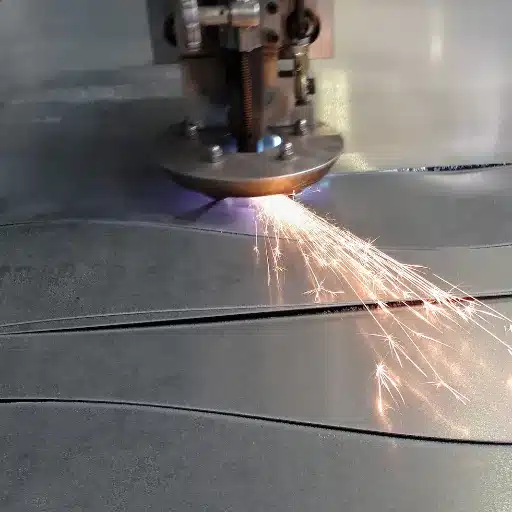
My usual tools for stainless steel are angle grinders, plasma cutters, and laser cutting machines. Each one has its own merits, but I pick one depending on the degree of precision required, and the cost of operation, with respect to the equipment one has in hand.
Jigsaw for Stainless Steel Sheets
A jigsaw is the most versatile tool for cutting stainless steel sheets, mainly for smaller or intricate work. Since it is capable of making curved and irregular cuts, it is the choice for precision work. For the best results when cutting stainless steel, one must use a blade made of bi-metal and intended for metal cutting. These blades usually have 14 to 24 might be slightly greater than 24 teeth per inch (TPI), wherein the lower figure will produce smoother cuts in stainless.
When cutting stainless steel with a jigsaw, several other considerations should be observed. The stainless steel sheet must be firmly clamped before beginning cutting. Any movement can reduce the accuracy and increase the possibility of cracked cuts. Keep the speed low, so as not to generate too much heat either on the blade or on the material. Excess heat will dull the blade and reduce its ability to cut smoothly. Cutting oil applied on the surface will reduce friction on the blade, giving it a longer life and smoother cuts.
Special-purpose Tools for Stainless Steel Rods
If you want to get clean, precise cuts without compromising the strength of stainless steel rods, you have to use the right tools. Metal cutting bandsaws are probably the most workable tool for this purpose. A bandsaw of excellent quality, equipped with a bi-metal blade, will make smooth and accurate cuts on stainless steel rods of any diameter. These blades resist the heat generated during cutting and minimize blade wear.
Cold saws are another good alternative if your work demands precision or complicated intricacies. They work by reducing the speed and using a toothed circular blade that lessens the heat build-up on the stainless steel surface and thereby prevents warping or damage. Using a carbide-tipped blade on a cold saw further increases the life of the blade and improves performance.
Tips for Precision and Safety
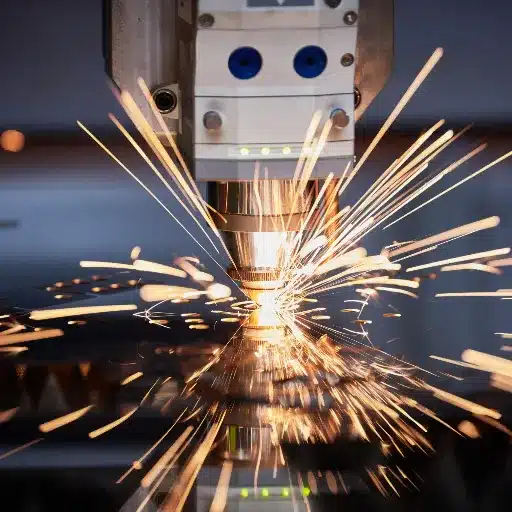
To ensure precision and safety, I make sure to clamp the workpiece securely before making any cuts and don the proper Personal protective equipment such as gloves and safety glasses while operating the tools. Not only that, but I also follow the manufacturer’s instructions for using the tools, looking them over frequently for points of wear or damage.
Achieving Accurate Cuts
Prior to cutting any stainless steel rod, it should be prepared smoothly and with respect to its highest quality tool and manner of practicing. Even the slightest accidental deviation in marking may result in having unwanted precision in a particular task. Marking can be done using a fine-tipped marker or a scribe so that it is clearly visible on the material.
Professional Tip: If inappropriate tools are used, they could lead to uneven edges and unnecessary loss of material. Better tool options might then include band saws, or a circular saw fitted with fine-tooth blades designed especially for stainless steel. According to more recent industry data, fine-tooth blades with around 24 to 32 teeth per inch work best to cut stainless steel with minimal burr.
Safety Measures to Consider When Cutting Stainless Steel Rods
- Wear Appropriate PPE:
Safety goggles are a must so protect the eyes from flying debris and metal particles generated during cutting. Heat-resistant gloves will protect the hands from burns caused by hot surfaces or sparks. Ear defense must also be considered because cutting tools can emit sounds louder than 85 decibels, which in time might lead to hearing loss.
- Work in Adequate Ventilation:
When you cut stainless steel, fumes will be generated, which contain chromium and other particulates harmful if inhaled over long exposure. OSHA says chromium compounds’ exposure may cause respiratory problems, so it is hence very important that the ventilating plug is applied to reduce exposure.
- Ensure Proper Tool Maintenance:
A dull or damaged cutting tool does not only affect the quality of cuts but also will cause safety hazards because of excessive vibration and possible failure of the tool. Regularly check and maintain your tools to ensure they are in good working condition.
Reference Sources
-
KDM Fab
- Title: “Stainless Steel Cutting 101: A Practical Guide”
- URL: KDM Fab
- Summary: This guide covers various methods for cutting stainless steel, including tools like angle grinders, laser cutters, and waterjets. It provides practical tips for achieving clean and precise cuts.
-
DP Laser
- Title: “Why Use Laser Cutting Stainless Steel”
- URL: DP Laser
- Summary: This article explains the advantages of laser cutting stainless steel, its applications, and how to achieve high precision and efficiency in cutting processes.
-
Accurl
- Title: “Laser Cutting for Stainless Steel: Types, Machines & Costs”
- URL: Accurl
- Summary: This resource provides insights into laser cutting technology for stainless steel, including machine types, parameters, and industry applications.
Frequently Asked Questions (FAQs)
❓ How can I cut stainless steel without inflicting any damage to it?
To cut stainless steel without any damage, the right blade and cutting technique should be selected, and with the kind of blade required for metals, such as a diamond saw or metal cutting blade with the most teeth, damages could be prevented. Other factors include using such low speeds when cutting that minimal heat is generated, hence maintaining the integrity of the material.
❓ What thickness of stainless steel can one cut using a jigsaw?
A jigsaw can cut stainless steel up to a thickness of 1/8 inch, using a bi-metal blade adequate for cutting metals. For thicker pieces of stainless steel, power saw or water jet cutter would warrant a better choice.
❓ Can I cut stainless steel with a hacksaw?
Yes, a hacksaw can cut stainless steel, although the recommended one is the metal-cutting style hint: use a metal-working blade. The difficulty of cutting stainless steel with a hacksaw will depend on the thickness of the material and the steel grades involved. Also, a proper technique together with steady pressure is imperative to obtain a clean cut.
❓ Common cutting methods for stainless steel: what are they?
These are stainless steel common cutting methods: laser cutting, waterjet cutting, and traditional cutting methods-hacksaw, jigsaw. Different advantages may be associated with each method; for example, laser cutting can provide high precision, and waterjet can cut thicker materials. Knowing the characteristics of the steel grades concerned would always help in choosing the best method.
❓ How do I make precise cuts in stainless steel?
To make precise cuts in stainless steel, proper tools and blades for cutting and proper cutting technique should be used. Some good results can be obtained with a jigsaw or power saw fitted with good-quality cutting blades. Also, mark your cuts and clamp down the stainless steel piece to hold on to the accuracy while cutting.
Ready to Master Stainless Steel Cutting?
Apply these techniques and safety measures for professional results every time!

